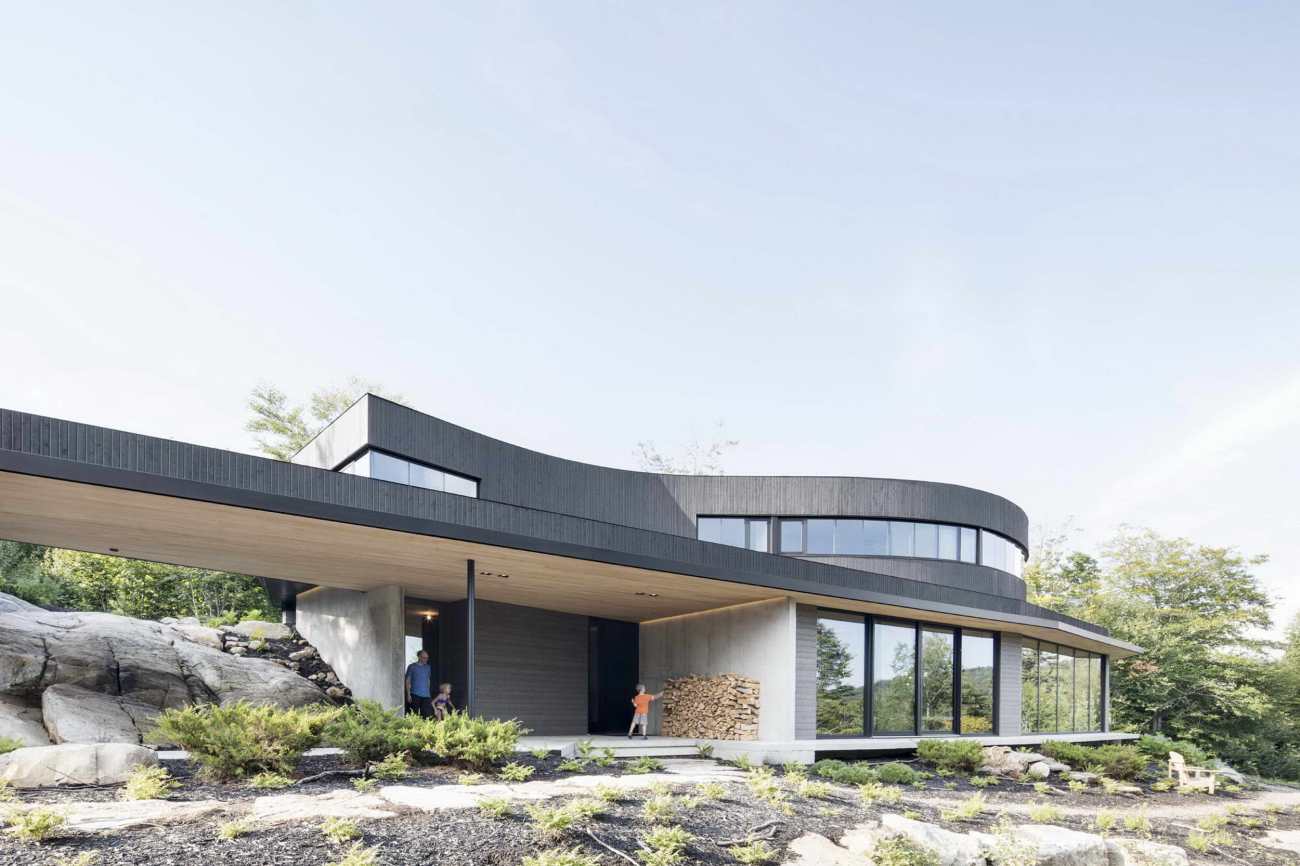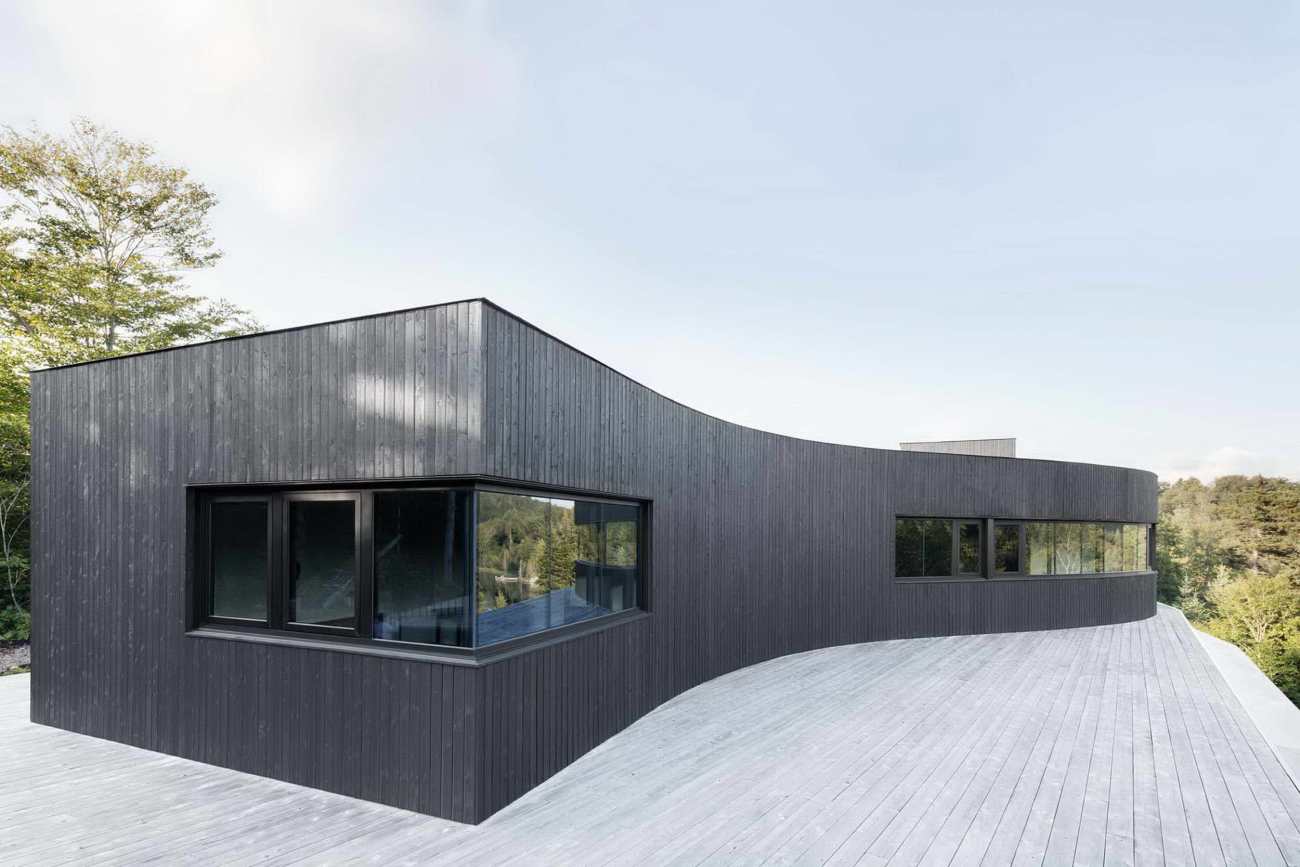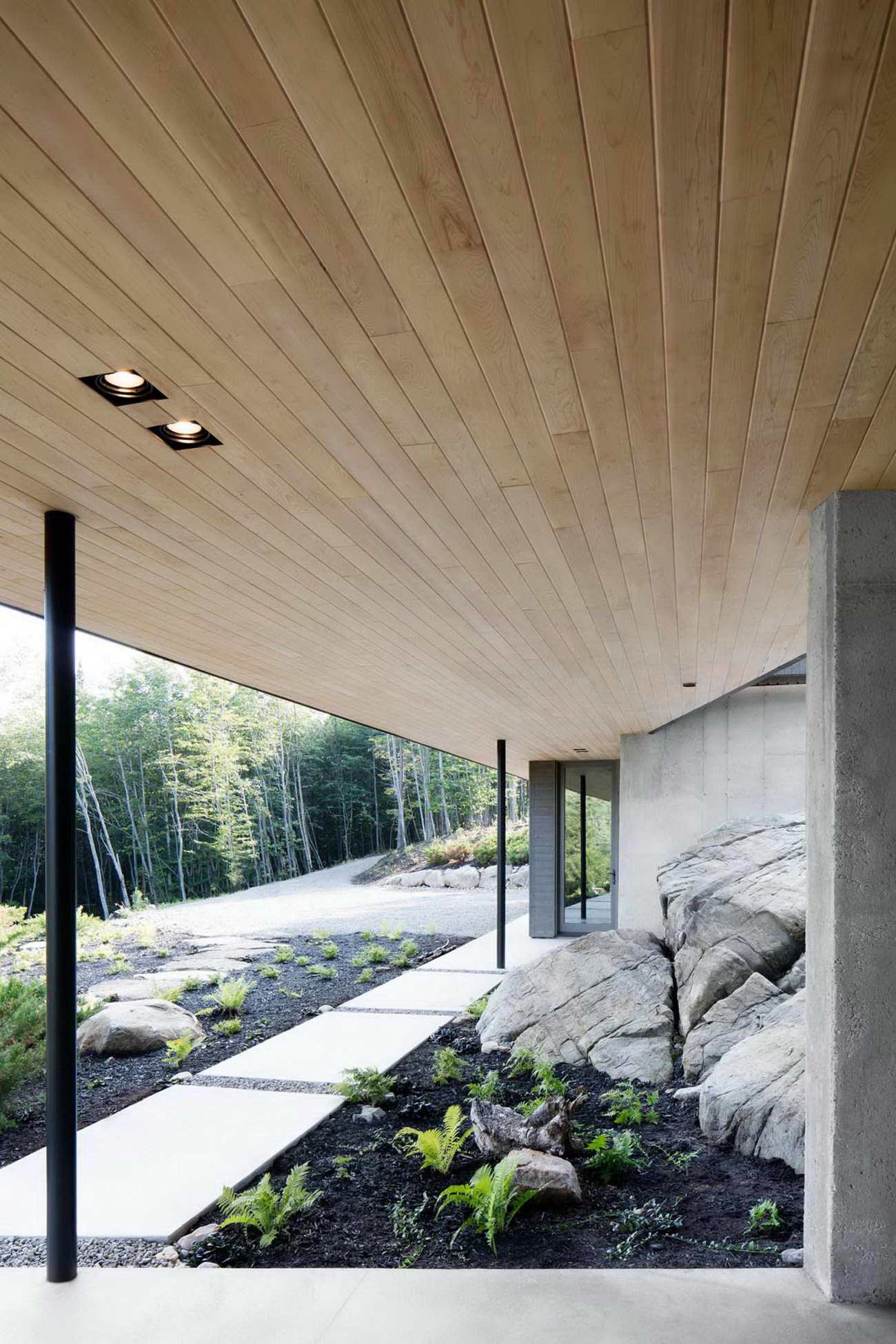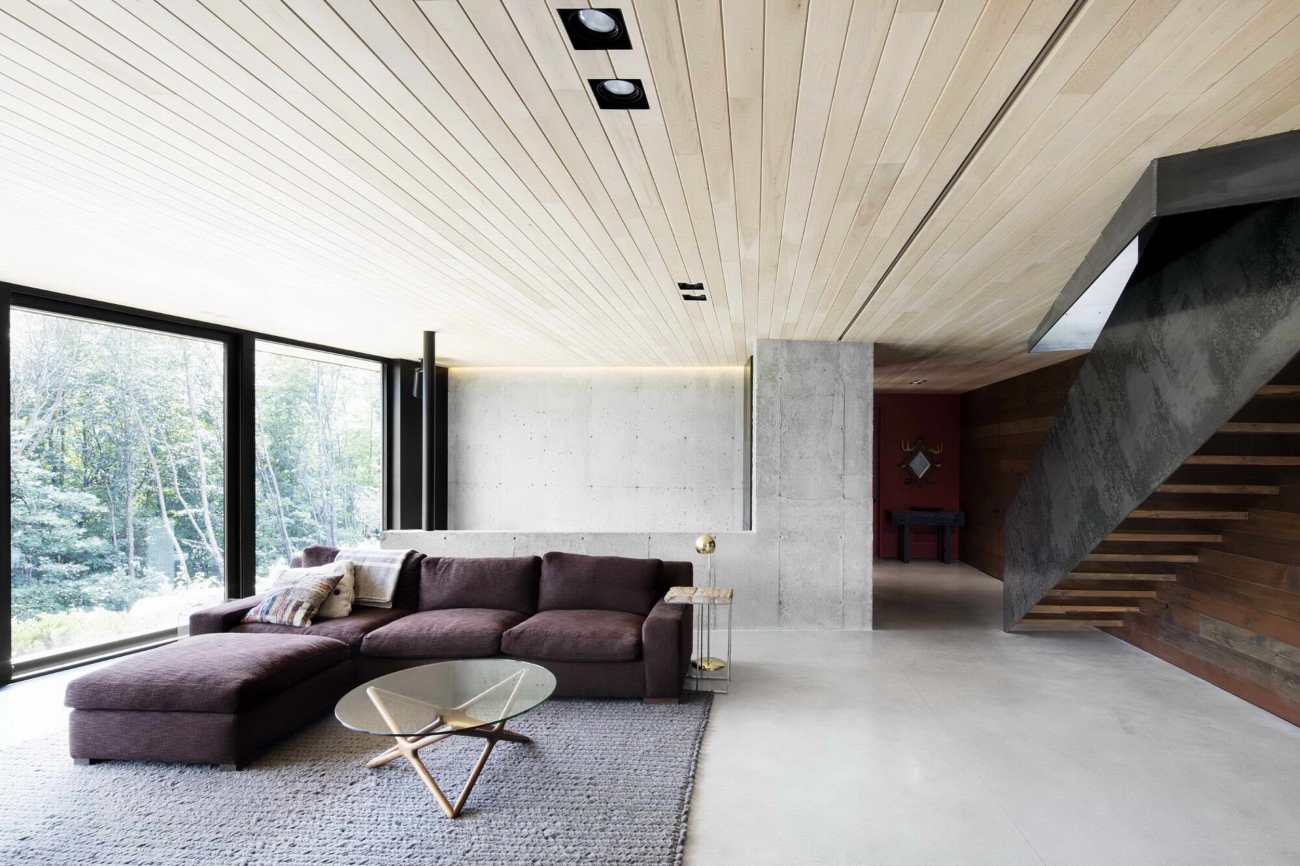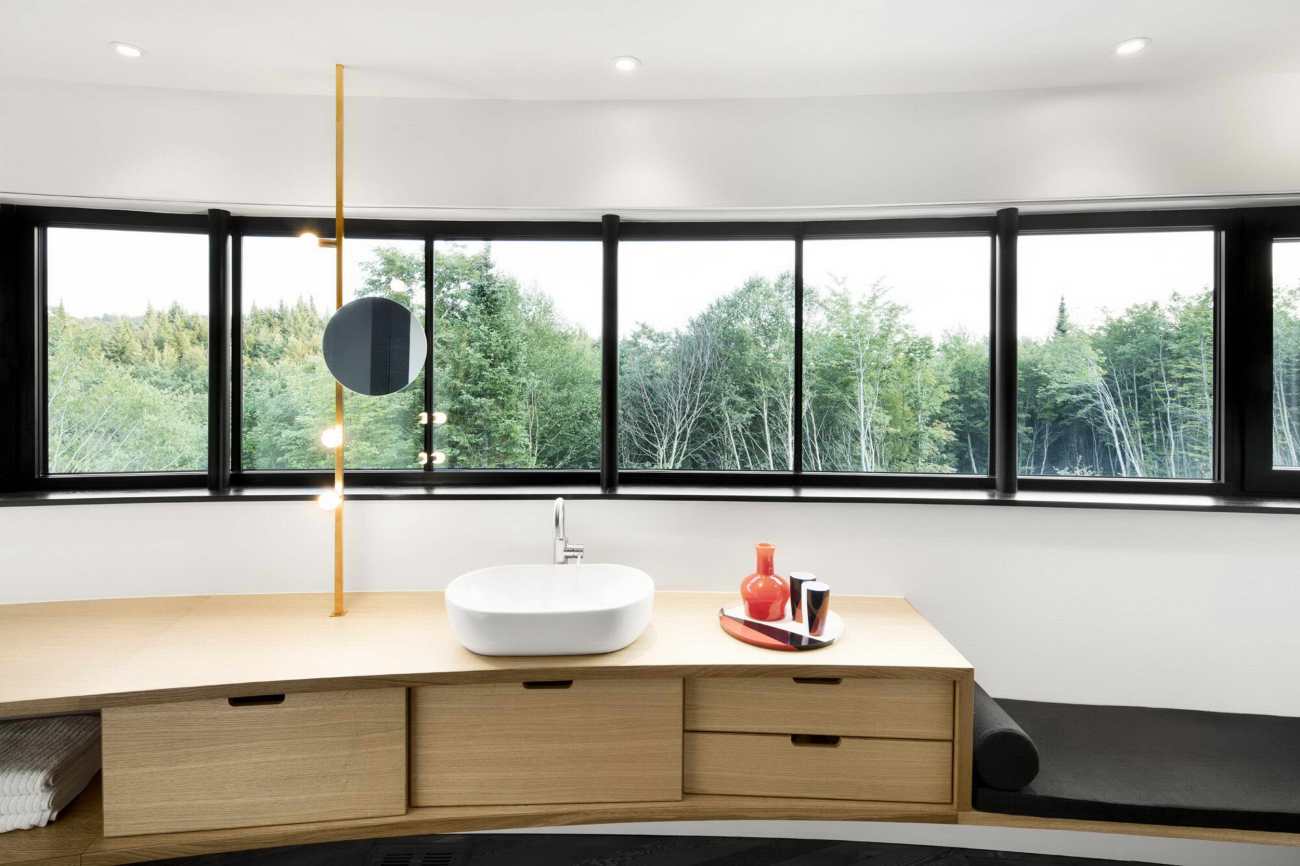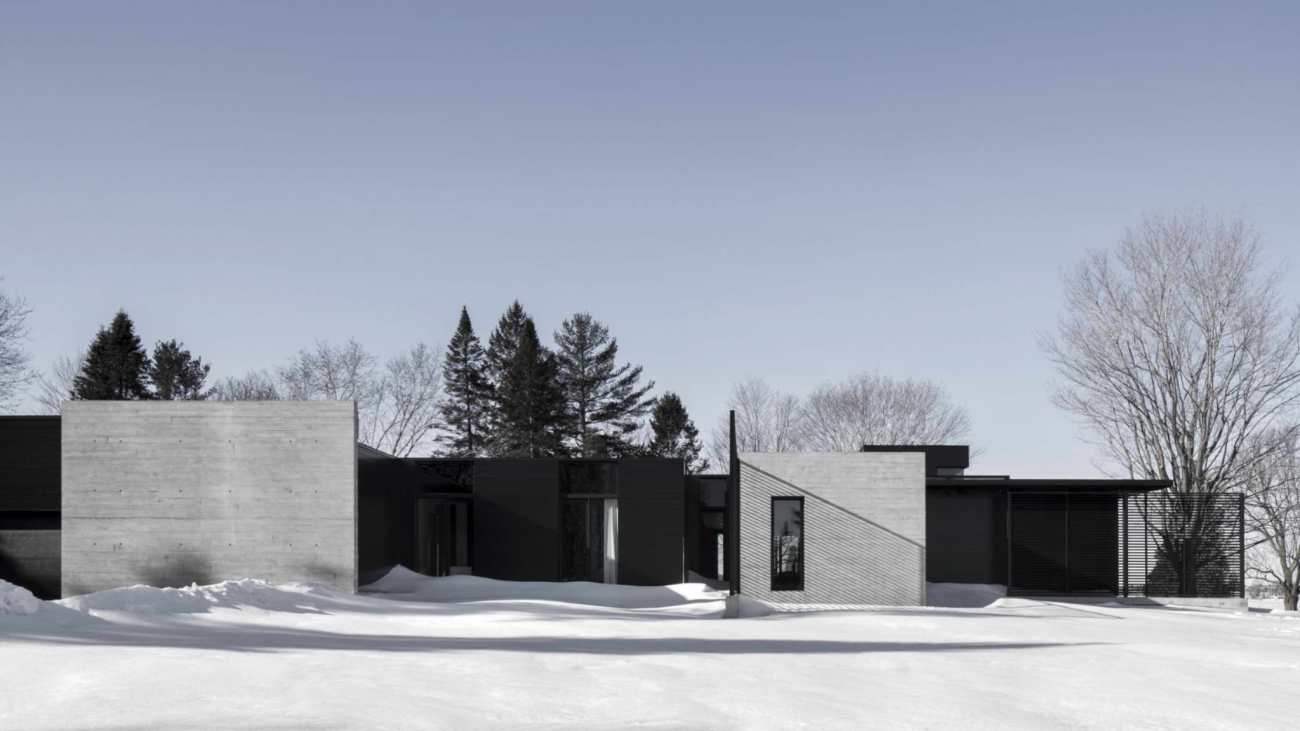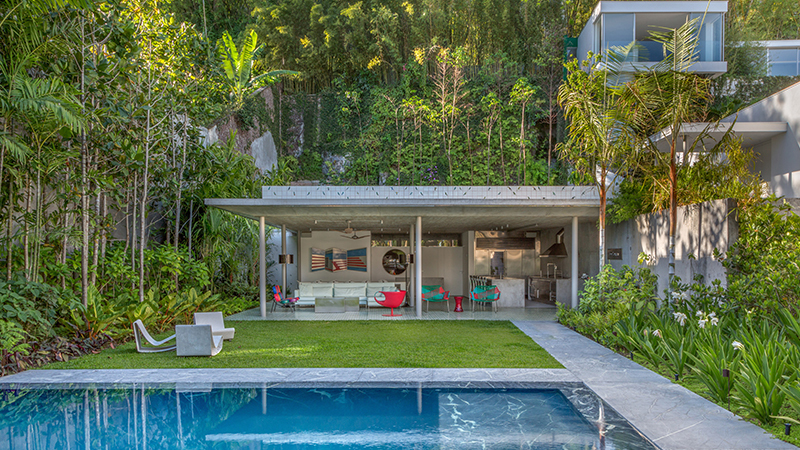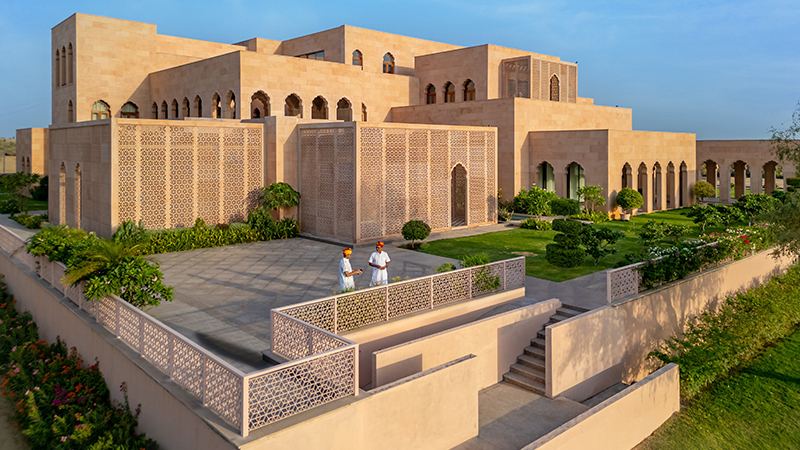| 公司: | Alain Carle Architecte | 类型: | 建筑 |
|---|---|---|---|
| 地区: | 加拿大 | 标签: | 别墅私宅 |
项目La Heronniere的概念方法提出了对回收概念的解释。我们反思在实践中维持一个理论问题的重要性,这个问题似乎被今天公众对技术层面的唯一兴趣所破坏:“可持续发展”。La Heronniere的设计遵循了一种与升级循环相关的方法(通过艺术家诗意的介入,将废品回收成有价值的物品)。当前它的起源,一方面,主流的“态度”的概念,通过Jeff Koons的媚俗艺术,恢复旧的概念引用“回收”到一个新的项目愿景,另一方面,通过开发项目基于技术方面相关的回收和可再生能源。四个方案组成部分定义了这个探索的框架。占用、供应、再利用和区别,这些显然不是来自未来住户的 "方案",而是产生于项目的概念方面。这是我们工作中反复出现的方法,其中对形式和场所的质疑先于方案问题。
La Héronnière’s conceptual approach proposes an interpretation of the notion of recycling. We offer a reflection on the importance of maintaining a theoretical issue in our practice, which seems undermined by the public’s sole interest today in the technical dimension: “sustainable development”. La Héronnière was designed according to an approach related to upcycling (which consists of reclaiming waste into an object of value by the artist’s poetic intervention. This current derives its origins, on the one hand, from the antiestablishment “attitudes” of Arte Povera, through Pop Art to the recent kitsch art of a Jeff Koons), recovering old conceptual references “recycled” into a new project vision, and on the other hand, by developing the project based on technical aspects related to recycling and renewable energy. Four programmatic components define the framework of this exploration: Occupation, Supply, Reuse and Distinction, which obviously do not come from the “program” of the future occupants as such, but arise from the conceptual aspects of the project. This is a recurring approach in our work, in which the questioning of form and place precedes the programmatic issues.
占用
该项目很常见:一个有两个孩子的年轻家庭希望建造一栋代表他们价值观的房子,他们希望和谐地、"共生 "地占据一个自然环境,并将该地视为 "主人"。环保要求是没有商量的:居住空间没有磁场、没有无线通讯协议、能源自给自足、材料不含挥发性有机化合物、项目残渣回收、电动车等。面对这些具有Y世代价值观特征的美好愿望和技术要求,我们只引入了一个似乎比这些新媒体推动者价值观更重要的东西:地方的价值,与环境相关的存在品质。与表现品质的理念相反,我们提倡建筑项目的概念和感性价值,作为对当前可持续发展理念的真正反击。
Occupation
The program was common: a young family with two children wanted to build a house representing their values, their desire to occupy a natural setting harmoniously and “symbiotically”, with the site perceived as “the host”. Environmental requirements were non-negotiable: no magnetic field in the inhabited space, no wireless communication protocol, energy self-sufficiency, materials free of volatile organic compounds, recovery of project residues, electric car, etc. Faced with all these good intentions and technical requirements, characteristic of the values of Generation Y, we introduced just one more, which seemed to take precedence over these new media-promoter values: the value of the place, the existential quality related to the environment. In contrast to the idea of performance quality, we promoted the conceptual and perceptual value of the architectural project, as a real counterpoint to the current concept of sustainable development.
因此,介入的地方,尤其是其固有结构的改造方式,是这两种对立的土地利用规划愿景的交汇点。土地呈现出一个陡峭的坡度,一种对角线的平面,不利于住宅的占用。针对这种对角线产生的空间质量,我们在景观中设置了一个水平面,由三个神秘的相同的大地点产生,位于场地中三块巨石的顶部。从那时起,这个项目就被设计成一个简单的等级原则:在这条水平线之上或之下。下面是具有矿物质氛围的生活空间,上面是使用轻质材料的睡眠区。在这一水平面之下,我们决定对场地进行重组,以建筑一个高原,成为户外生活面。爆破残留物被压实,并被拒绝在场地上,以创造项目的新地面:一个受干扰的表面,而不是一个从领土上提取的表面。这是一种对挖掘过程中对场地的暴力的 "姑息处理"。
The place of intervention, but especially the way its intrinsic structures were transformed, was therefore the meeting point of these two antagonistic visions of land use planning. The land presented a steep slope, a sort of diagonal plane, not conducive to residential appropriation. In response to the spatial quality generated by this diagonal, we installed a horizontal plane in the landscape, generated from three mysteriously identical geodesic points, located at the top of three boulders present on the site. From that time on, the project was designed on a simple hierarchical principle of occupation: being above or below this horizon line... Below are living spaces with mineral ambiences and above are sleeping areas with lighter materials. Below this horizontal plane, it was decided to reorganize the site in order to architecture a plateau that would become the outdoor living plane. The blasting residues were compacted and refused on the site to create the project’s new ground: a disturbed surface rather than one extracted from the territory. A sort of “palliative treatment” of the violence done to the site during the act of excavation.
 | 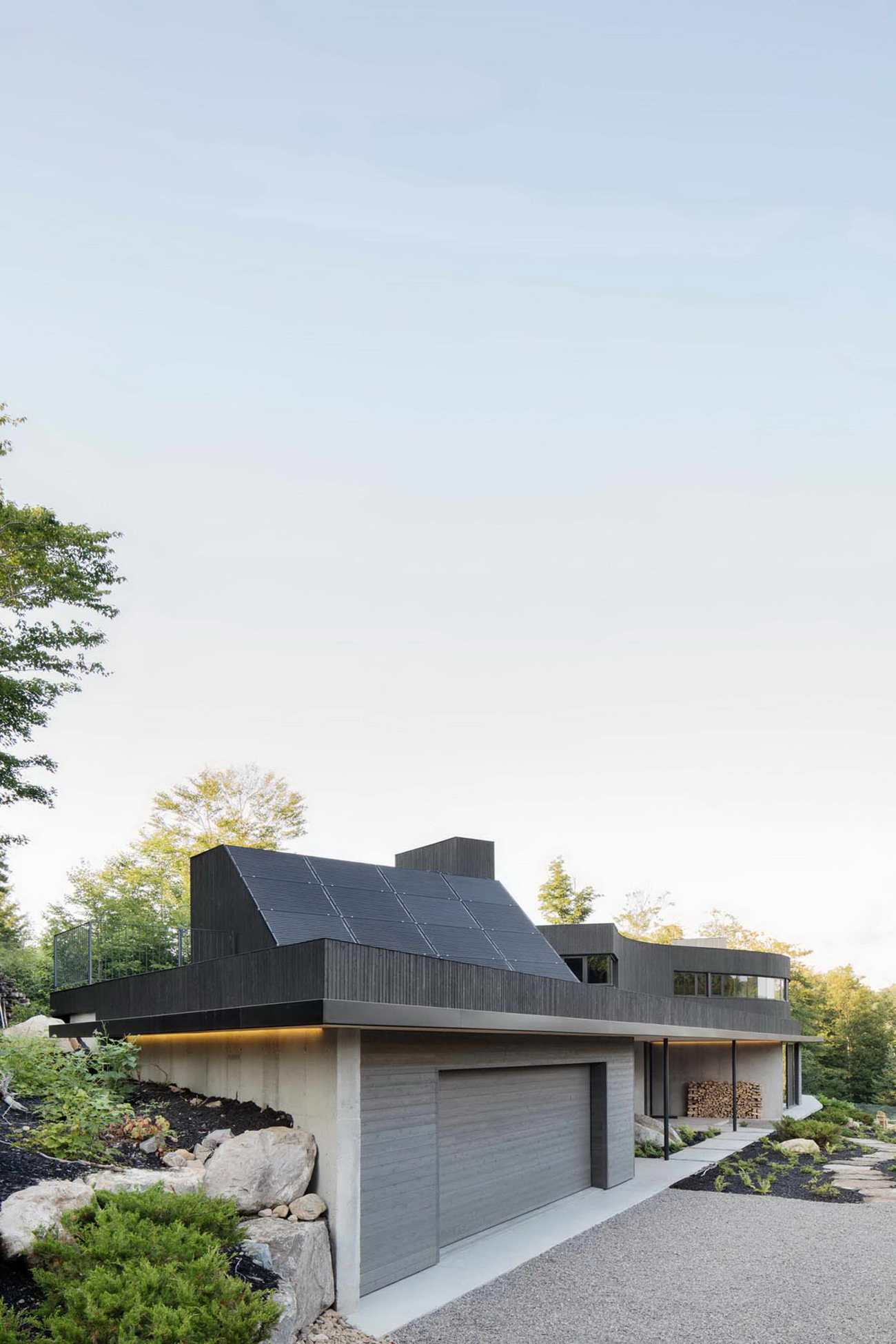 |
随后的阶段是将连接三块现有岩石的水平面的承重墙定位。这个平面相对于住宅的周边来说,尺寸过大,以形成户外区域,防止恶劣天气和夏季的太阳辐射。用于建造承重墙的混凝土与岩石相接,在住宅的低层保留了矿物质量。墙体的位置垂直于空间的部署轴线,但特别是相对于太阳的路径,以便在某些时间内捕捉其能量并将其储存起来以节省供暖。地面也是混凝土的,同样起到了被动元件的作用,在一天结束时产生热量和质量转移。
The subsequent stage positions the bearing walls of the horizontal plane linking the three existing rocks (Fig. 15). This plane is oversized relative to the residence’s perimeter to create outdoor areas protected from bad weather and from solar radiation in summer. The concrete used for construction of the bearing walls is conjoined with the rocks, retaining a mineral quality on the lower level of the residence. The walls are positioned perpendicular to the axis of deployment of the spaces, but especially relative to the path of the sun, in order to capture its energy during certain hours and store it to save on heating. The ground is also concrete and plays the same role of passive component producing a heat and mass transfer at the end of the day.
供应
全家都在关注将 "行动 "的概念引入住宅的项目中。饭菜的准备工作成了难得的 "在家 "活动之一,带来了运动和社交性。为了发展项目核心的进餐空间,我们在西南侧的大窗台处,连接了一个小温室,用于保存秋季室外作物的种子,为冬季播种做准备。温室里还常年保存一些芳香植物,并开发了排水系统,方便种植和养护。夏天,场地的残坡,朝向正南,成为提供理想排水品质的生长场所。因此,这种 "市场花园 "天职的住宅提供了一种自给自足、积极向上的生活模式,远离了婴儿潮一代的慵懒午后。
Supply
The family was concerned about introducing a notion of “action” into the residence’s program. Meal preparation became one of the rare “at home” activities, bringing movement and sociability. To the development of the eating space at the heart of the project, we adjoined a small greenhouse, in continuity with the big bay window on the southwest side, for conservation of seeds from outdoor crops during the fall to prepare for sowing during the winter. Some aromatic plants are also kept in the greenhouse all year round, with a drainage system developed to facilitate growing and maintenance. During the summer, the site’s residual slope, facing due south, becomes the growing place that offers ideal drainage qualities. This “market garden” vocation of the residence therefore offers a self-sufficient, active living model, far from the lazy afternoons of the Baby Boomer generation.
在一条平行的轨道上,住宅“为自己提供”再生能源。缺少的能源系统,有些复杂,是为了确保家庭运行在水电能源方面几乎完全自给自足。它主要以生物质为燃料,也从光伏板系统中获取能量。在夏季天气晴朗时,该系统提供的剩余能源将被重新输送到该地区的配电网络,并计入冬季的消费信贷。最终,当经济协议将应用于当地的配电网时,家庭应该实现零消费比率。
On a parallel track, the residence “supplies itself” with recycled energy. The missed energy system, of some complexity, is designed to ensure the home operates in almost total self-sufficiency in terms of hydroelectric energy. Mainly fueled by biomass, it also derives its energy from a system of photovoltaic panels. In fine summer weather, the system offers an energy surplus that will be rerouted to the region’s power distribution grid and accounted for in winter consumption credits. Ultimately, the home should achieve a zero consumption ratio when the economic agreements will be applied with the local distribution grid.
 |  |  |
旧物新用
对于La Heronniere,我们与未来的居住者紧密合作,以旧的或恢复的建筑材料为基础来建造空间。在设计项目的同时,设计对象也出现在项目中,这种方法吸引了专业背景之外的研究。为了回收旧车库的木门,设置了一个可移动的栅栏,将主要生活区与一层分隔开,主要通过一个慢燃壁炉供暖。这样可以在寒冷的冬天夜晚更好地保存底层的热量,防止热量通过底层的楼梯井上升到上层。
Reuse
For La Héronnière, we collaborated closely with the future occupants to architecture the spaces based on old or recovered construction objects, etc. This approach, in which the object appears at the same time as the project is designed, invites research outside the professional context. To recycle the wood doors of a former garage, a removable fence was set up, separating the main living area from the ground floor, heated mainly with a slow-burning fireplace. This allows better preservation of heat on the ground floor during cold winter evenings, preventing heat from rising to the upper floor through the stairwell on the ground floor.
区别
从项目中可以理解这涉及到惯常利益的转变:住宅不应该是刻板地展示财富和权力的 "理想家园",而是通过对场地的具体占领,进行意识形态的展示行为。这是态度转变的标志,还是资本主义发达的最终标志?
Distinction
As can be understood from the project’s statement of intent, this involved a shift of the usual interests: not a stereotyped setting of the “ideal home” displaying wealth and power, but an act of ideological demonstration through a specific occupation of the site. Is this a sign of a change of attitude or the ultimate sign of advanced capitalism?
然而,这种观念方法的结果原来是独特的,甚至是与众不同的。我们认识到一部分人新的生态原则的重要性 以及与这些原则相关的新的社会价值,它们提供了杠杆作用,并反映了居住者对建筑区别的渴望。
However, the result of this conceptual approach turned out to be unique, even distinctive: We recognized the importance of the new ecological principles of a certain segment of the population, and the new social values related to these principles, which provide leverage and reflect the occupant’s desire for architectural distinction.
▽屋顶平面图 Roof plan
▽入口层平面图 Ground floor plan
▽负一层平面图 Lower floor plan
▽立面图 Elevation
▽立面图 Elevation
▽立面图 Elevation
▽立面图 Elevation
Project: LA HERONNIÈRE
Design firm: Alain Carle Architecte
Location: Wentworth, Quebec, Canada
Year of Completion: December 2014
Area: 465 m2 / 5 000 ft2
Architect: Alain Carle
Project manager: Jean-François Marceau
Project manager: Isaniel Lévesque
Contractor: EcoHabitations Boréales, www.ecohab.ca
Type of construction: wood, steel and concrete
Cladding: white cedar (natural and stained)
Lightening: Lambert & Fils, www.lambertetfils.com
Millwork: BWA Ebenisterie, ebenisteriebwa.com
Photos credit: Adrien Williams, adrienwilliams.com
更新日期:2020-12-11 16:40:41
非常感谢 Alain Carle Architecte 带来的精彩项目, 查阅更多Appreciations towards Alain Carle Architecte for sharing wonderful work on hhlloo. Click to see more works!
